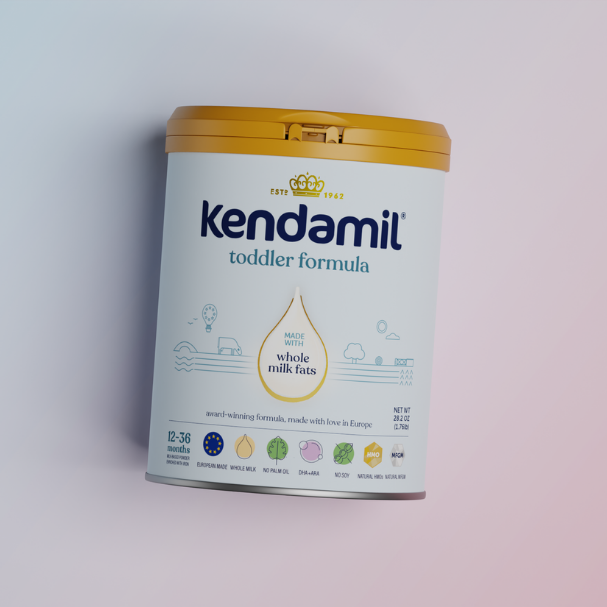Hey soon-to-be parents! Welcome to the rollercoaster of emotions, excitement, and a bit of nervous anticipation that is the journey to parenthood. Just like parenting, there's no one-size-fits-all when it comes to labor and delivery choices, but we’ll take you through all the key info you need on your birth options, so you can make informed decisions.
Birth plan essentials
A birth plan, also sometimes referred to as a ‘birth preference list’, outlines what care you would like during labor and delivery, as well as immediately after the birth too! You can write your personalized birth plan either yourself or by using the ACOG birth plan template, which you can find here. You might have an appointment made for you to discuss this, but if you don’t, this is something you should ask your ob-gyn about, in order for you to help feel empowered and informed for any decisions during labor.It’s great to head into childbirth knowing your options available, but keeping an open mind and being flexible should any complications arise.
Here are some things to consider putting into your birth plan:
- Birthplace setting: where do you want to give birth
- Birth partner: what you want them to support with
- Equipment and facilities
- How you want the birth room to be setup: candles, dimmed lighting etc
- Preferred laboring positions
- Pain relief preferences
- What kind of contact with medical staff you would prefer
- If you want skin to skin, breastfeed or wash baby post-birth
Role of the Birth partner
What does a birth partner do?
A birth partner is someone you choose to have with you during your birth to support and advocate for you. It’s really important that you talk about your birth preferences with your birth partner, so that they can help support you and speak up for you if need be.
Who can be a birth partner?
This is often your partner, but it could also be a parent, another family member, or even a close friend which you trust. It could even be an interpreter if English isn’t your first language, or a carer if this is someone you rely on daily. Some people like to hire a professional birth partner, known as a Doula, who is someone that is trained to support people in childbirth.
Whoever it is, you want to feel comfortable and safe in their presence, as you can often feel quite vulnerable during labor and birth.
How many birth partners can I have?
It’s important to check with the hospital you intend to give birth at, on how many people are allowed in the birthing room, as some trusts have restrictions on this. If you are having a home birth you can have as many birth partners as you like.
Cesarean birth vs. vaginal birth
Vaginal births and cesarean births are two methods of delivering a baby, each with its own set of considerations and potential benefits.
Vaginal births occur through the natural passage of the baby through the birth canal, involving the mother's pelvic area as well as the cervix. This method is generally considered the less invasive option, and is often associated with a quicker recovery for the mother. You might experience an assisted vaginal birth, where a doctor uses forceps or vacuum to help deliver your baby - this is always done under good pain relief, and you will always be informed if your medical team think this is a necessary procedure during birth.
Cesarean births, on the other hand, involve a surgical incision into the mother's abdomen and uterus to deliver the baby. You can opt for a cesarean section if you think this is the route you’d like to go down, and should speak to your ob-gyn about this. While cesarean sections are sometimes necessary for medical reasons, they typically entail a longer recovery period and carry additional risks, which you can also speak to your ob-gyn about.
Pain relief during labor
It’s important to note that some pain relief options are only available in certain birth settings, and you should speak to your ob-gyn to help you decide which are best suited for your own personal circumstances, setting and medical history.
Here are some non-pharmacological options that can be done wherever you intend to give birth:
- Hypnobirthing: Hypnobirthing takes breathing techniques and adds relaxation, visualization and mindfulness techniques to help you concentrate on your body and the birth of your baby. Have a look for a local accredited hypnobirthing teacher, there are many hypnobirthing methods, including the world famous Mongan method.
- Massage and Counterpressure: Physical touch and massage, especially on the lower back, can provide comfort and distraction from pain.
- Hydrotherapy: Immersing in a warm bath or using a shower during labor can help ease discomfort. The buoyancy of water supports the body and provides relaxation. You could also consider a water birth, where you labor and give birth in a large bath! Water birth facilities are more common in a birth center, but can also be found in hospital settings too, so be sure to check with your ob-gyn team what is available to you.
- Labor Positions for Comfort: Changing positions frequently, such as walking, rocking, or swaying, can help manage pain and encourage the progression of labor.
- TENS Unit: Using a TENS unit on your lower back can help distract from a contraction.
Here are some pharmacological options that are only available in a hospital setting:
- Opioids: The most commonly used opioids in childbirth are morphine and remifentanil. The effect is that you may feel more relaxed, but also drowsy, and sometimes a bit sick and sleepy. Your healthcare team will monitor you and baby throughout. You can read more about the benefits and side effects here.
- Epidural Block: An epidural involves injecting anesthetic medication into the epidural space in the spine, numbing the lower half of the body and alleviating pain. You’re awake and alert throughout your labor, but can’t feel anything from the waist down. You can read more about the side effects here.
Choosing a birth setting
It’s important to know the differences between a birth center, an obstetric hospital, and home birth. They all provide different pain relief options, and in some medical circumstances, a hospital may be more suitable. There is also the cost of your chosen birth setting to consider, you can learn more about health insurance cover here.
Here are the birth setting options you may wish to consider:
Birth Center
- Birth centers offer an alternative to hospital births in the US.
- Emphasize low-risk, natural childbirth with minimal interventions.
- Staffed by licensed health care providers, they focus on a holistic approach to maternity care.
- Provide home-like environments, family involvement, and options like water births.
- Connected with nearby hospitals for potential transfers in case of complications.
- Growing in popularity as more women seek personalized and natural birthing experiences.
- Evidence shows that birth centers are a safe option for birth
- Birth centres are covered by most major health insurance plans.
Hospital birth details
- You’ll be advised to give birth at the hospital if you or your baby are likely to need care from an obstetrician or other health professionals before, during or after labor.
- Immediate access to specialists like anesthetists or neonatal pediatricians is available.
- Full range of medical pain relief, including Epidural, is offered.
Home birth considerations
- Surrounded by your own comforts to help you feel safe and calm.
- Supported by experienced midwives that you have chosen.
- Home birth provides non-pharmacological pain relief. Limited pain relief options compared to hospitals.
- Home birth regulations vary by state, and legal aspects should be considered.
- Not all insurance plans will cover the costs of a home birth, or some may only cover part of the costs,, you will need to check this with your health insurance provider.
- If complications arise, you would have to be transferred into a hospital via an ambulance.
Understanding your labor and delivery options not only gives you a sense of empowerment and control but also lets you create a birth preference list that suits your preferences. Make sure to seek advice from your ob-gyn.
Resources:
- Find a childbirth education class suited to you.
- Learn about the Mongan method of hypnobirthing.
- American Pregnancy Association is a non-profit organization offering educational resources and support for women and families during pregnancy.
- ACOG provides evidence-based information and resources for pregnancy and childbirth.
- CDC offers information on pregnancy and childbirth.
- BabyCenter provides expert advice and support for pregnancy, childbirth, and parenting.














